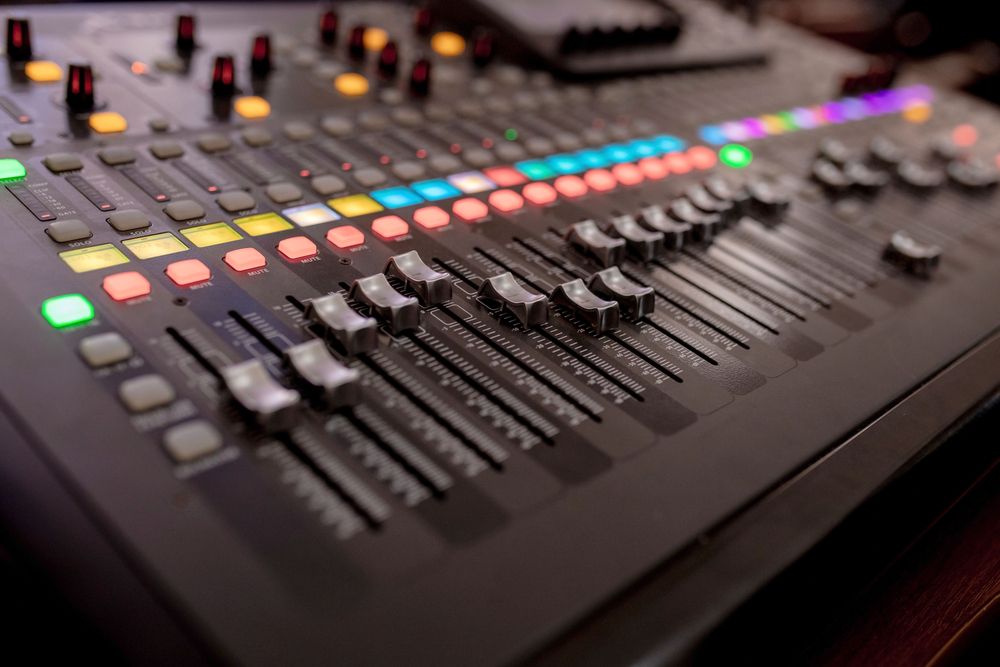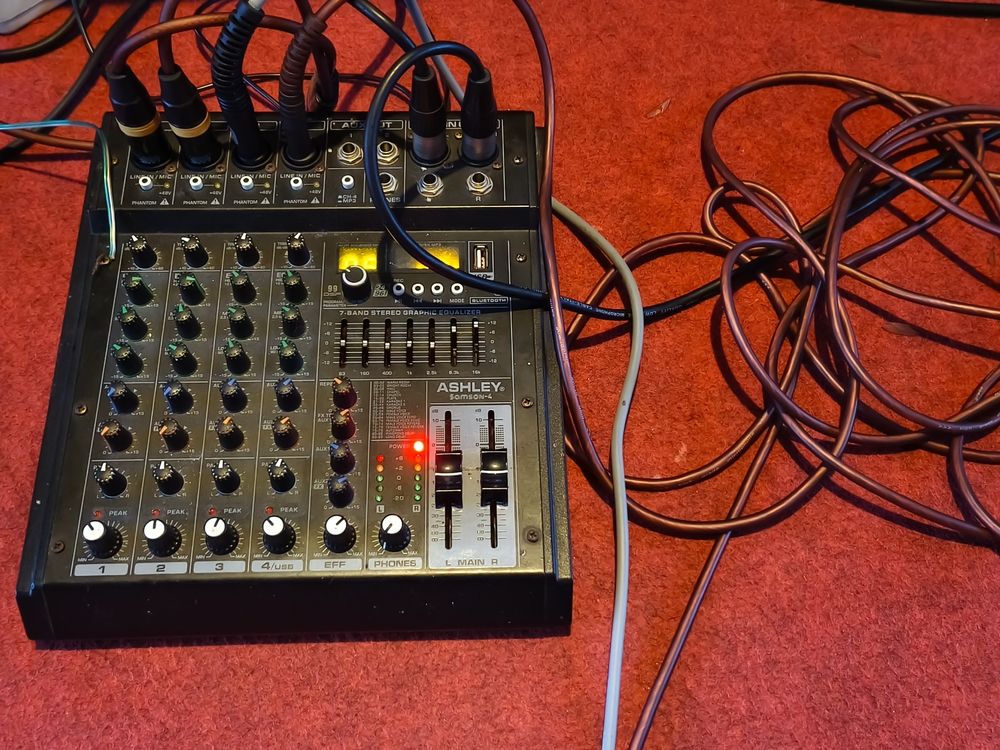Summary
- Pay close attention to what you plan to plug in to the mixer, and make sure you have plenty of available inputs.
- If you need more than analog stereo output, like digital outputs or a USB connection for a computer, make sure the mixer has one.
- While extra features can be great, don’t discount the utility of a small, portable mixer if that’s all you need.
If you’re a content creator, the right audio mixer can make your life much easier, especially as you expand your setup. The good news is that finding the right one for you comes down to answering a few questions.
What Are You Using the Mixer For?
Audio mixers are fairly simple: they take several audio signals and combine them into fewer signals, at least typically. That said, they vary in many other ways, like how many inputs and outputs have, plus other built-in features from basic equalization to audio effects.

Related
Why Do Podcasters Wear Headphones While Sitting Next To Each Other?
Ever wonder why podcasters wear giant headsets when they’re practically elbow to elbow? Spoiler: It’s not about style.
While it can be temping to shop for features you might use, it’s generally better to focus on what you’ll be using the mixer for most. For example, if you’re recording a podcast, you’ll want a mixer with plenty of microphone inputs, while this won’t be important if you’re mainly recording from synthesizers, for example.
Choosing the Right Number of Inputs
For many purposes, the most important number when it comes to a given audio mixer is the number of inputs it handles. Manufacturers don’t exactly go out of their way to hide this information, but they don’t make it as clear as they could.
For example, most mixers labeled as “16-channel” are actually counting both the left and right sides of one or more stereo channels to reach that number. Technically, this reaches the stated channel count of the mixer, but this isn’t the same as 16 full channels.
There is no set N+1 rule to follow for channel counts. Instead, you’ll need to carefully check the channels on the mixer you’re considering buying to make sure that it features the number of inputs you need in the format you need.
One final thing to keep in mind is that buying another mixer later is pricier than buying a slightly bigger one now. If you’re not sure whether you may need those extra channels, you likely won’t regret it.
Microphone vs. Line vs. Instrument Inputs
While a mixer may have a given number of inputs, the connections those inputs use are another story. This is as or even more important as the overall number of inputs.
Audio mixers typically accept either 1/4-inch or XLR microphone connections. While you’ll find the occasional mixer with an instrument-level input for plugging in a guitar, this is typically a feature more often found in audio interfaces than mixers.
Many consumer-level mixers feature combination jacks that let you plug in either 1/4-inch or XLR cables into the same jack. This gives you flexibility both now in terms of what you can connect and later in terms of how you can use your mixer.
How Many Outputs Do You Need?
Choosing the number of inputs you need for a mixer is usually a fairly simple process: Plugging in six microphones means you need six inputs. Deciding how many outputs you require can be just as easy, or more daunting!
For many purposes, if all you’re looking for is stereo output, the vast majority of mixers available have all the output capabilities you need. If you’re buying your first audio mixer, this is probably all you need to know.
That said, one other feature built into many modern mixers is the ability to output stereo audio to a digital audio workstation (DAW) on your computer. Not every mixer has this feature, but many do, and while it won’t replace a dedicated audio interface, it could be a handy extra feature.
Built-in Effects
Depending on what you’re using a mixer for, you may be looking to add some simple effects to your signals. While the built-in effects you’ll find on most mixers aren’t going to rival hardware units that engineers pay thousands for, they’re still plenty effective.
You won’t find every effect, but basic reverb, echos, and delay effects are common on consumer-level mixers. You’ll even find more over-the-top effects like AM radio and pitch-shifting effects, depending on the mixer and the manufacturer.
One thing that isn’t as common is more practical effects like compression, likely because this is an effect that works better on a per-channel basis. There are mixers with compression built into each channel, but they’re typically much more expensive than what we’re talking about here.
The Portability Factor
If you think of the typical mixer in a recording studio, you’re likely thinking of something that takes a team of people to move from room to room, if it’s even possible at all. While it’s true that mixers can be huge and cumbersome, they can also be light and portable.
Well, at least as portable as something typically made from metal can be!
That’s one more thing to consider when thinking about buying a mixer. Yes, it’s nice to have as many inputs as you may need some day, but it’s also handy to have a mixer you can toss in your backpack on the way to a jam with some friends.
This largely comes down to how you plan to use the mixer, but don’t discount portability when you’re thinking about how big or small to go with your mixer.
When Not to Use an Audio Mixer
A mixer isn’t always the right tool for the job. Most people will be perfectly fine with a few USB microphones and DAW software. You only really need a mixer when you have to mix numerous audio sources at the same time.
For example, if you need to mic up a drum kit, or you have four or five people participating in a podcast. So think carefully about how much mixing you actually need and then decide if a dedicated mixer is really the best solution.
Learning to use a mixer correctly takes time, research, and practice. So you need to be ready to make that commitment before making that purchase!







